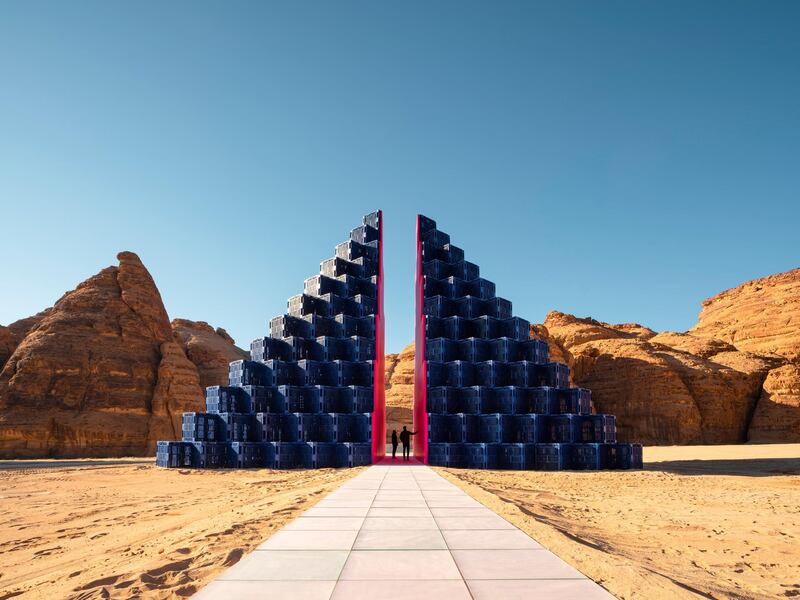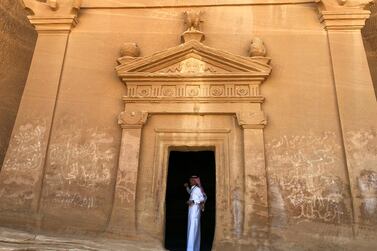A metal pyramid stands in the middle of the desert, split in half by a passageway illuminated in hot pink. It has an otherworldly quality – like a vision from science fiction, or America's Burning Man music festival. But this is not another planet, nor is it Nevada. It is the Saudi Arabian governorate of Al Ula, where artist Rashed Al Shashai's mesmerising A Concise Passage is one of many art installations scattered throughout the desert, against the backdrop of awe-inspiring rock formations and the millennia-old remains of an ancient civilisation.
Together the artworks form the Desert X exhibition – part of the kingdom’s drive to foster a budding arts and culture scene. Saudi Arabia has taken bold steps to open up new opportunities, and to share its rich heritage with the world.
Last December, Riyadh’s dance-music festival, MDL beast, attracted more than 200,000 people. This week, it announced the launch of 11 new cultural councils, including a Film Commission – a feat unimaginable a few years ago. Saudi Arabia recently opened its first cinema in 35 years, and 45 more are set to open by 2021. Under the wider framework of Vision 2030, a twenty-year plan to modernise the kingdom, Riyadh has succeeded in attracting foreign investments and introducing Saudi youth to a world of possibilities. The new vision, initiated and led by Saudi Crown Prince Mohammed bin Salman, focuses on creativity as a path to opportunity.
The recent changes have also carved new possibilities for media companies. MBC Group, the largest Arab broadcaster, is shifting its headquarters from Dubai’s thriving Media City to Riyadh over the next five years.
Saudi Arabia’s new approach echoes that of its Gulf neighbours, many of whom have promoted the arts for years. As early as 2001, Oman’s late Sultan Qaboos had ordered the construction of Muscat’s beautiful Royal Opera House. The UAE has also been at the forefront of Arab culture. Since 2008, Abu Dhabi’s International Prize for Arabic Fiction has been central to the Arab literary scene, and served as a launch pad for talented writers, as well as a much-needed platform to recognise long-standing authors.
This year's shortlisted writers, whose names were revealed yesterday, come from all corners of the Arab world. The nominees include Egyptian author Youssef Ziedan, who won the prize in 2009 with his work Azazeel as well as Syrian novelist and Russian literature specialist Khalil Alrez, who has translated works by Anton Chekov to Arabic. The two other shortlisted authors are Jabbour Douaihy, a well-known Lebanese writer, and Algeria's rising star Abdelouahab Aissaoui. Such awards give the oxygen for artists, poets and writers to thrive and receive the recognition they deserve.
Over the years, the Gulf has become central to the Arab world’s media and arts scene. Budding artists, writers, performers and journalists have sought to carve out a new space for themselves, and industry leaders have given them the means to thrive. Developing a future that gives priority to the arts ensures it will be a bright one.






